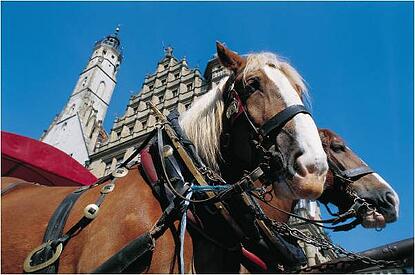 With the end of 2011 came the end of the Clean Truck Fee for shippers importing and exporting through the ports of Los Angeles and Long Beach. Or did it?
With the end of 2011 came the end of the Clean Truck Fee for shippers importing and exporting through the ports of Los Angeles and Long Beach. Or did it?
A previous Universal Cargo Management blog looked at how the removal of the fee could coincide with increased costs for shippers importing and exporting through the ports of Los Angeles and Long Beach because with the fee removal came banning trucks with an engine year of 2006 or older from terminals.
While the clean truck fee has stopped being assessed by the ports, such fees continue to come from draymen.
For laymen, draymen are truck drivers or companies who deliver shipping containers to and from ports.
Originally, a drayman was someone who drove a flatbed wagon called a dray which was pulled by horse or mule for transporting goods. Logistics has changed through the years. The dray basically doesn’t exist anymore nor does horse-drawn deliveries.
by horse or mule for transporting goods. Logistics has changed through the years. The dray basically doesn’t exist anymore nor does horse-drawn deliveries.
However, some breweries still keep horses and a dray that they’ll pull out for parades, festivals, and unveilings. This quaint practice is spotlighted in popular Budweiser Superbowl commercials if you want an idealized and humorous image of the classic draymen.
Ocean freight shipping has changed over the years too; but, since transporting goods in ships over the seas is an old practice, it makes sense that it would hold on to old terms like draymen for those delivering containers to and from ports.
The Clean Truck Fee was part of an initiative to reduce pollution at the ports of Long Beach and Los Angeles. The initiative has been very successful in reducing pollution. A large part of pollution at the ports came from trucks so the regulations created for having “clean trucks” played an important role in decreasing L.A. port pollution.
Of course, the largest cost of the clean truck part of the initiative went to the draymen who had to buy new trucks.
We all know how business works; at least a portion of those costs to the draymen would be passed on to the shippers who hire them. Draymen began charging a clean truck fee of their own, although not necessarily always under that name, so they could cover the costs of buying new trucks.
Now the ports of Los Angeles and Long Beach have dropped their clean port fee, but the fee remains from the draymen to continue to recoup the costs of the new “clean trucks” purchased to lower fuel emissions and be in compliance with port policy.
The good news is the fees from the draymen are not new while the fees from the ports of Los Angeles and Long Beach have ended. So while carriers are making moves to increase ocean freight rates in 2012, there is a slight fee drop happening on the trucking side of the equation.
We should not see a new spike in trucking costs due to 2006 and older engined trucks no longer being allowed at the Los Angeles and Long Beach ports.
For a free ocean freight rate quote including trucking, click here.
